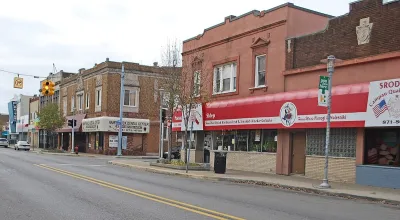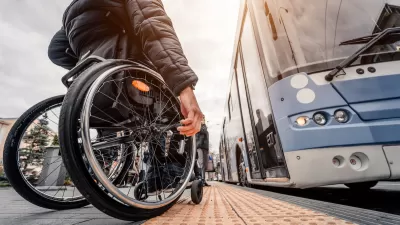A study reveals that the density of city blocks is a significant factor in communities’ walkability and, subsequently, improved public health outcomes for residents.

New research affirms the connection between walkable communities and improved health outcomes for residents, reports Emilio Perez Ibarguen in Great Lakes Echo.
Researchers from Michigan State University wanted to understand the more specific factors that impact public health to better inform policymakers. Of the four factors that typically define walkability — size of blocks, proximity to transit stops, variety of business types, and variety of zoning types — “The density of street intersections – corresponding closely to the size of blocks in the area – had the greatest impact on obesity.”
The study also found that factors unrelated to urban design, such as socioeconomic status and race, had more significant impacts on health than walkability.
The article includes information about Michigan cities that are working to improve their walkability and make their streets safer for pedestrians. The small Detroit enclave of Hamtramck, population 28,400, is the most walkable in the state. While its small size is an advantage, the town has also taken actions such as allowing mixed-use buildings. But a lack of transit connectivity to bigger cities and other regions can stifle the potential of small towns, where people remain dependent on cars for transportation outside the city.
FULL STORY: Walkable communities associated with better health, study shows

Florida Considers Legalizing ADUs
Current state law allows — but doesn’t require — cities to permit accessory dwelling units in single-family residential neighborhoods.

Manufactured Crisis: Losing the Nation’s Largest Source of Unsubsidized Affordable Housing
Manufactured housing communities have long been an affordable housing option for millions of people living in the U.S., but that affordability is disappearing rapidly. How did we get here?

Americans May Be Stuck — But Why?
Americans are moving a lot less than they once did, and that is a problem. While Yoni Applebaum, in his highly-publicized article Stuck, gets the reasons badly wrong, it's still important to ask: why are we moving so much less than before?

EV Chargers Now Outnumber Gas Pumps by Nearly 50% in California
Fast chargers still lag behind amidst rapid growth.

Affordable Housing Renovations Halt Mid-Air Amidst DOGE Clawbacks
HUD may rescind over a billion dollars earmarked for green building upgrades.

Has Anyone at USDOT Read Donald Shoup?
USDOT employees, who are required to go back to the office, will receive free parking at the agency’s D.C. offices — flying in the face of a growing research body that calls for pricing parking at its real value.
Urban Design for Planners 1: Software Tools
This six-course series explores essential urban design concepts using open source software and equips planners with the tools they need to participate fully in the urban design process.
Planning for Universal Design
Learn the tools for implementing Universal Design in planning regulations.
City of Moreno Valley
Institute for Housing and Urban Development Studies (IHS)
City of Grandview
Harvard GSD Executive Education
NYU Wagner Graduate School of Public Service
City of Cambridge, Maryland
Newport County Development Council: Connect Greater Newport





























